
Hello, this is MONITORAPP.
Today, we're going to continue our series on AIONCLOUD Website Protection (WP).
WP is an integrated web security service provided by AIONCLOUD, which consists of WAAP, CDN, DDoS Mitigation, and WSPC.
Last time, I introduced WP in general and WAAP, and today, I will introduce the CDN service, Secure CDN, and DDoS Mitigation.
What is a Content Delivery Network (CDN)?
With the explosive growth of internet usage, increasing the performance of websites and web applications has become a hot topic.
In particular, minimizing data transfer times is critical to providing fast and reliable service to a wide range of users spread across the globe.
CDNs have emerged to solve this problem.
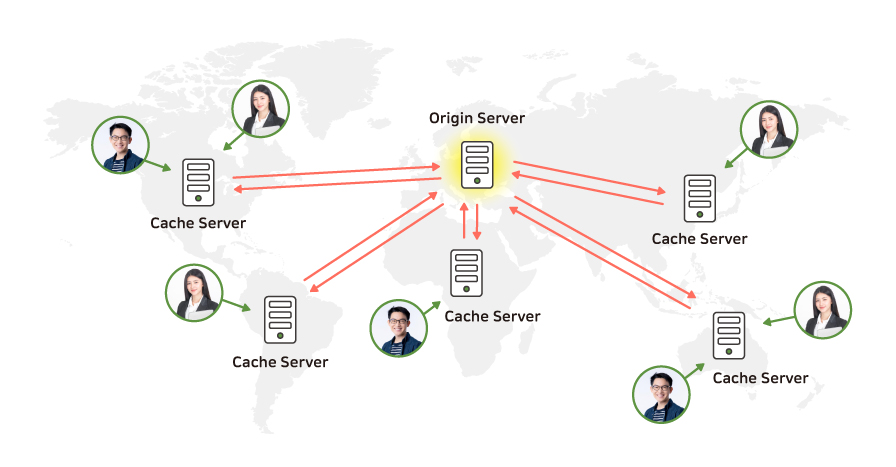
A CDN is a service that quickly delivers content (web pages, images, videos, etc.) to users through a network of servers distributed around the world.
Most of the content in a web application that you want to show to your users is stored on the origin web server.
However, a CDN can help improve your website's performance and reduce load times by storing and delivering that content on servers closer to the user rather than the origin server.
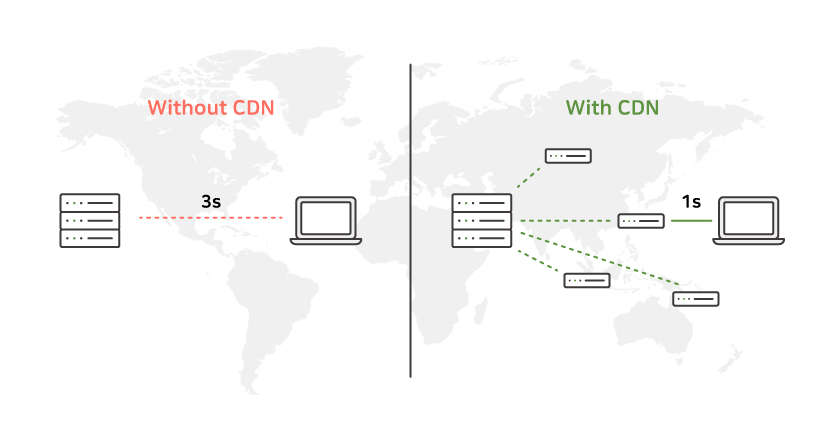
For example, if the website server you're trying to access is located in South Korea, and you live in Brazil, on the other side of the world, and you want to access your site, you'll need to send a request from Brazil to South Korea, and then have the content delivered from South Korea to Brazil.
With a CDN, however, you can fetch data from the server closest to the user's location, dramatically reducing the time it takes to load content, which can translate into a better user experience.
AIONCLOUD WP Secure CDN
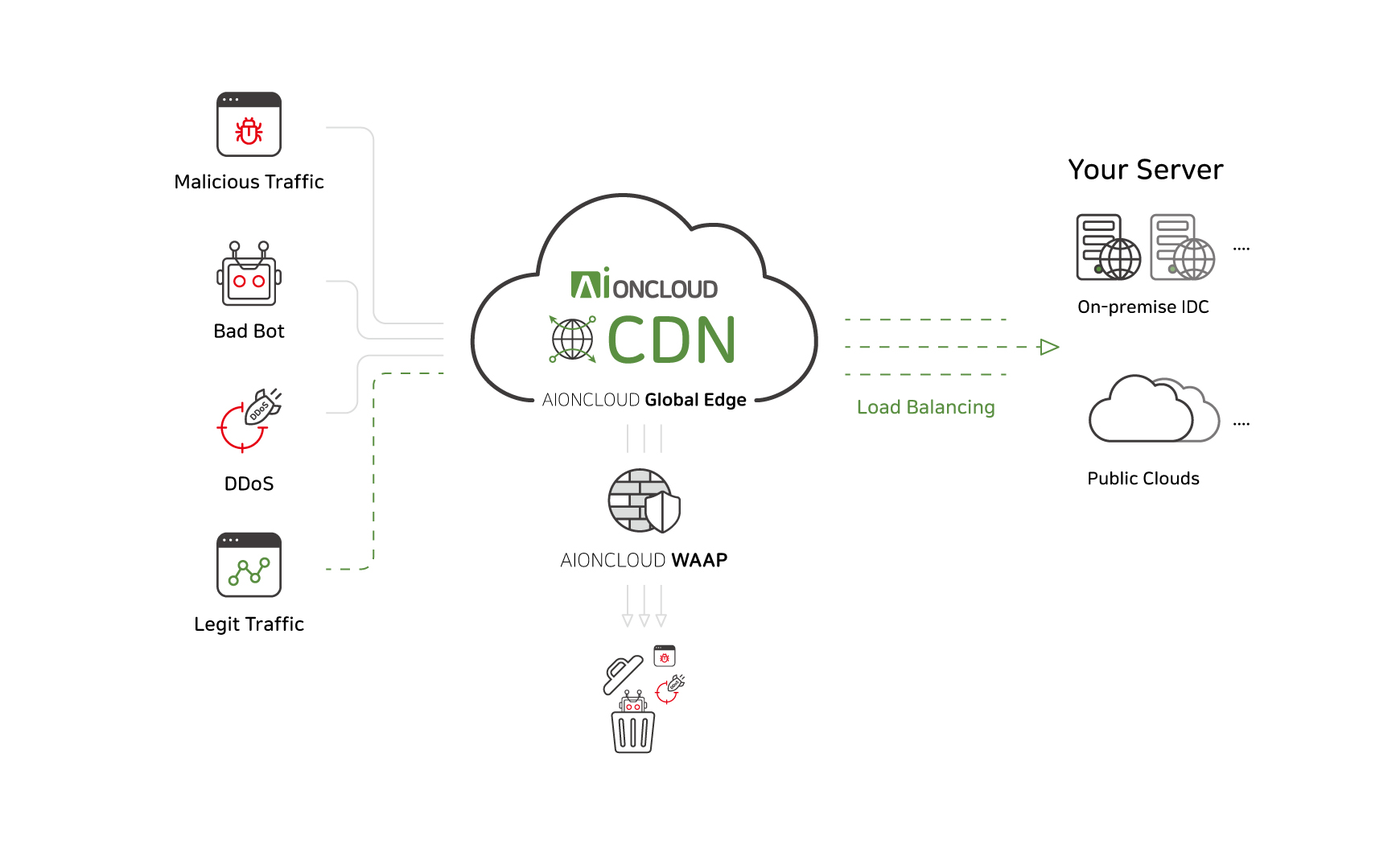
AIONCLOUD Website Protection (WP) service provides a CDN service with multiple content delivery features necessary for effective web business operations, including content protection, website optimization, and more.
AIONCLOUD's global edge network caches and distributes content to multiple locations around the world to speed up your website and reduce traffic costs by reducing bandwidth usage.
Benefits of AIONCLOUD WP Secure CDN
Reduce your bandwidth usage
Web hosts charge based on the amount of data transferred from the original server.
However, AIONCLOUD Secure CDN can reduce the amount of data transferred from the origin server by storing content closer to the user rather than the origin server.
Therefore, using AIONCLOUD Secure CDN significantly reduces the amount of data that needs to be transferred from the origin server to the end user and minimizes bandwidth usage, saving website owners money on hosting costs.
Enhanced Security
By decentralizing content delivery, AIONCLOUD Secure CDN can reduce the risk of direct attacks on origin servers.
It also works in conjunction with AIONCLOUD WAAP, which specializes in securing web applications and APIs, to deliver improved website performance and stronger security.
What is DDoS(Distributed Denial of Service)?
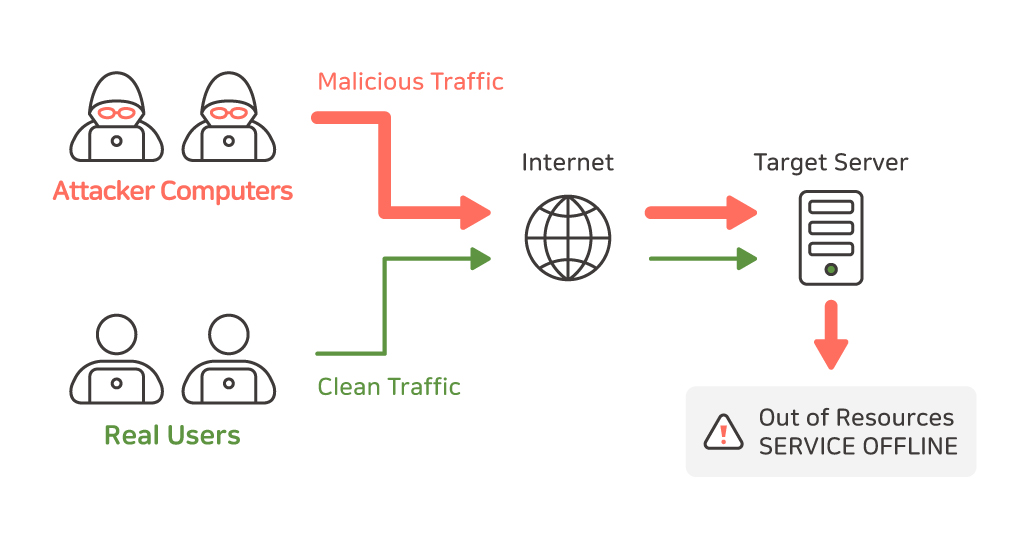
As services delivered over the Internet have become increasingly important and ubiquitous, malicious attempts to paralyze them have increased.
A DDoS is a cyberattack that uses multiple computers or devices to overwhelm a specific server or service network, preventing legitimate users from accessing that service.
DDoS attacks can occur at any OSI layer, but are most commonly carried out through L3/L4 and L7.
At L3/L4, DDoS attacks can overwhelm server resources or network equipment resources, or consume all available bandwidth, while at L7, DDoS attacks are not only resource consuming but also slow.
Typical DDoS attack examples include the following
L3/L4 DDoS Attack
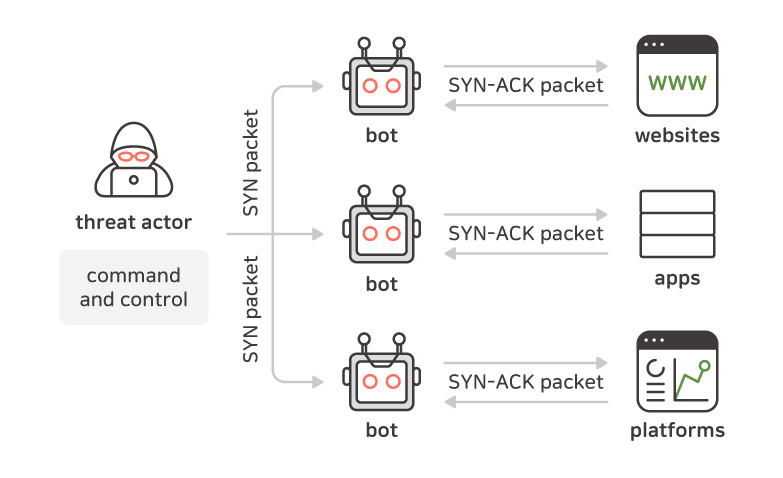
Protocol Attack
Protocol attacks are attacks that deplete network resources by exploiting structural weaknesses in protocols used at the network layer (L3) and transport layer (L4) of the seven layers of the OSI.
The main types include SYN Flood, ACK Flood, Ping of Death, and Smurf attacks.
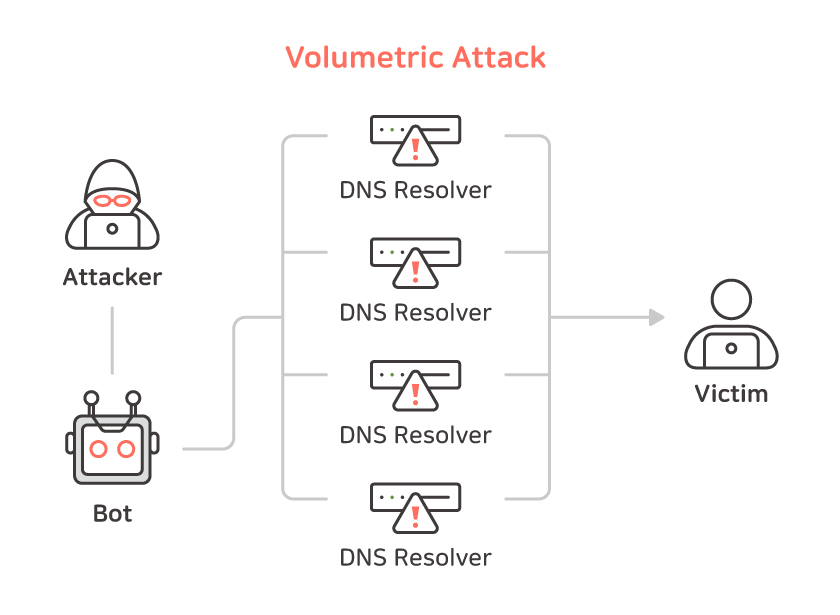
Volumetric Attack
A volumetric attack is an attack that exhausts network bandwidth by generating large volumes of traffic.
The goal is to prevent a specific server or network from handling legitimate traffic, and the attacker uses multiple infected devices (botnets) to send large amounts of data to a specific server.
The main types include UDP Flood, DNS Amplification, NTP Amplification, and ICMP Flood.
L7 DDoS Attack
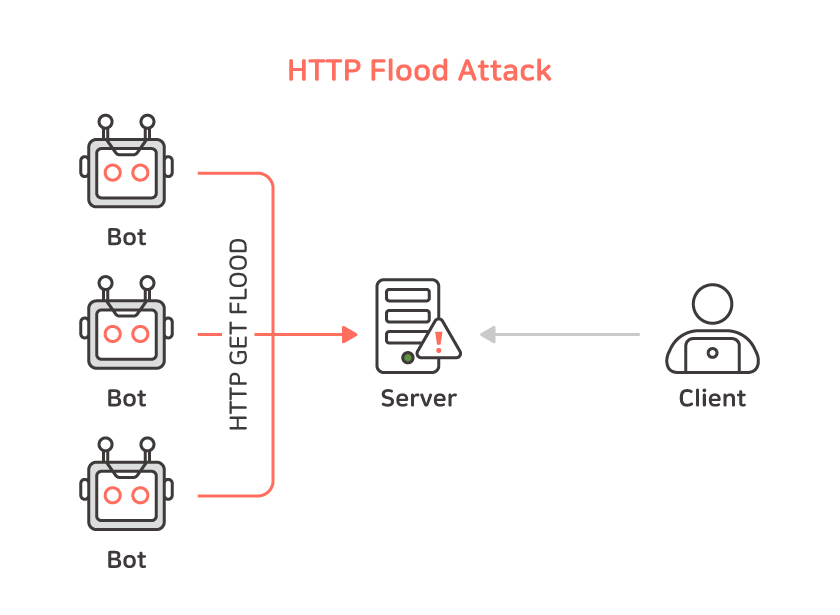
HTTP Flood
HTTP Floods exhaust a server's resources by making a large number of legitimate HTTP requests.
The attacker sends a large number of requests in the same way that a normal user would make a request to a web server, overwhelming the server's ability to process them and making it impossible to serve legitimate users.
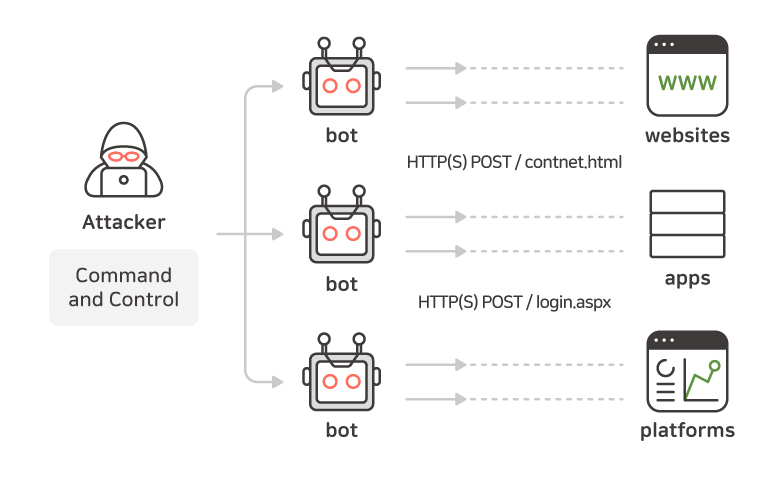
Slowloris
Slowloris exhausts the server's resources by keeping the connection to the web server open and constantly connected.
It works by keeping the connection to the server open and sending HTTP request headers very slowly, forcing the server to stay connected for a long time.
The goal is to cause maximum damage with minimum traffic, gradually draining the web server's connection resources and making the server inaccessible to legitimate users.
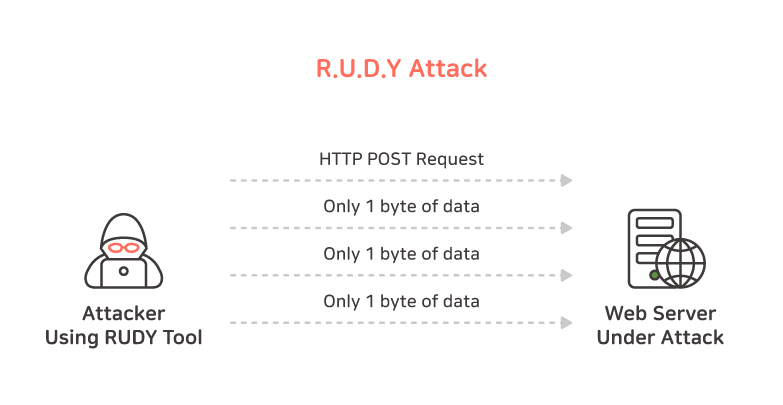
RUDY
RUDY (R-U-Dead-Yet?) is an attack that sends the body of a POST request very slowly, forcing the server to stay connected.
It is primarily targeted at web applications that handle web forms and focuses on the POST data rather than the HTTP headers.
Slow Read
Slow Read is an attack in which a server sends data to a client, and the client reads the data very slowly, forcing the server to stay connected while it sends the data.
AIONCLOUD WP DDoS Mitigation
AIONCLOUD WP provides DDoS security solutions for L3/L4 and L7 to ensure uptime and provide robust security for your website, web applications, and all of your organization's networks.
AIONCLOUD WP DDoS Mitigation is delivered using a global edge/cloud located around the world and prevents malicious traffic from penetrating into your cloud environment, data centers, and infrastructure to ensure the availability and integrity of your network.
Today's business environment is at risk from constantly evolving DDoS attacks.
A DDoS security solution is essential to prevent the damaging effects of a single DDoS attack, such as paralyzed operations, brand damage, and business interruption.
As such, AIONCLOUD WP DDoS Mitigation is more than just a defense solution; it is a critical component of ensuring that your organization's websites and applications are always running at peak performance.
In today's business environment, the availability and security of your services is critical to the survival of your organization.
AIONCLOUD WP uses a multi-layered defense strategy spanning L3/L4 and L7 to block malicious traffic before it enters the network and maintain service continuity. AIONCLOUD WP Secure CDN also provides optimized content delivery to users around the world, maximizing the speed and performance of your website.
The combination of CDN and DDoS mitigation provides the security and performance essential to running a web business, helping organizations build trust with customers and stay competitive.
With all of these benefits, AIONCLOUD WP is ready to ensure that your web services are ready for anything.
Proactively stopping the threat of DDoS attacks and delivering an optimal user experience in a globalized environment is key to business success.
If you'd like to learn more about AIONCLOUD WP, please visit https://www.aioncloud.com/waap/.
Next time, we will introduce WSPC in AIONCLOUD WP.
Thank you.

